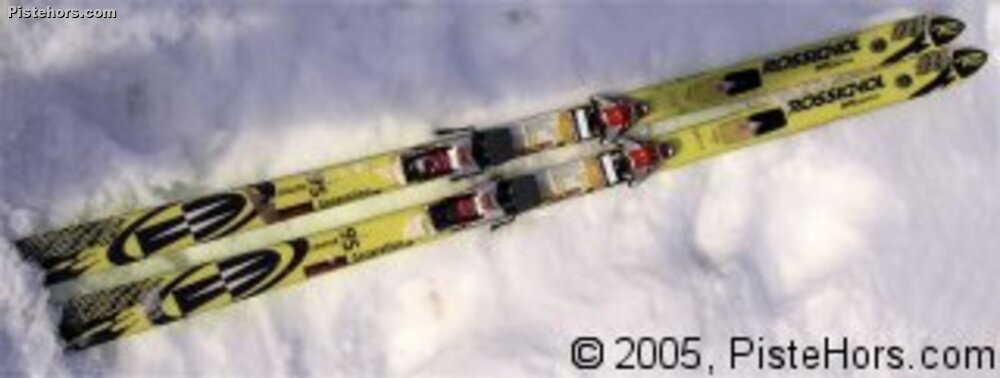I was sharing the chair lift with a couple of old geezers. Usually members of the ‘third age’ see everything better in their salad days but these guys were commenting on how the pistes had been transformed. At one time you skied over what were summer pastures. Drainage ditches, rocks and tree roots were all there to trip the unwary. Sure, winters lasted longer but there was no artificial snow to cover any patches left by Mother Nature.
 Rossignol 9S Generation
Rossignol 9S Generation
As far as skis went there was no comparison. Now you pretty much clipped a pair of planks to your feet and they skied themselves. Not like when they were lads when you had to learn how to ski properly.
This got me thinking; just how hard were those old pre-carving skis? Although I began skiing as a nipper some 30 years ago I’d never tried anything longer than a pair of 190cm Head parabolic. A few phone calls and I’d managed to procure myself some 201cm Rossignol 9S Generation dating from 1994. Not some junk out of granddad’s garage, these were as new, having almost never been used and were fitted with what were once top of the range Salomon race bindings.
At one time these extra-long slalom skis would have been the weapon of choice for anyone wanting to put up extreme routes in the Alps. Saudan, Baud, Bonfort and Vallençant all used boards over two meters in length. At that time their biggest fear was avalanches so they tackled long, steep couloirs late in the spring or autumn. The conditions over 1000 or more vertical meters could vary from winter to springlike from top to bottom but the entry to the routes, often on tungsten hard ice, required the grip afforded by long, straight skis. Even as recently as the early 1990s the legendary JMB (Jean-Marc Boivin) tackled the hyper-extreme Nant Blanc on such equipment.
 Sylvain Saudan at the entry to the Gervasutti
Sylvain Saudan at the entry to the Gervasutti
I’m 178cm, the skis didn’t look that long but I still had visions of them being about as maneuverable as the Exxon Valdez coming into an Alaskan port. Bridge to Engine room, hard to starboard… and maybe, just maybe they would begin to heave too before the next precipice. My route choice maybe wasn’t the best plan. I’d taken the chair from my local station that lead either to a bump run or a steep black. The devil or the deep blue sea. The edge of the bump run didn’t look too bad and I attempted a few turns until reaching a sharp right hander. Here my worst fears were suddenly realized. The concave slope made it hard to unweight the skis, instead they obstinately set a course dead ahead like a supertanker heading for rocks. A big effort finally got them to put about just before we ended up in the netting.
What the old men on the lift said was right. You had to ski properly, paying much more attention to weight. Knees bent, ankles flexed, weight evenly distributed over the front and back and definitely not too far back where the tails would dig in and stop any attempt to steer the planks. I was surprised that you could still carve and make short radius turns, just like the latest shaped skis but the real surprise was the amount of grip on icy surfaces, like the blade of a Swiss army knife cutting into a block of Rebluchon. I began to understand how they were able to ski some of the routes although the length of the skis would have required superb technique. So what kit were my chairlift companions using? Well the latest carving skis of course.
This article was originally published on the 9th January, 2005